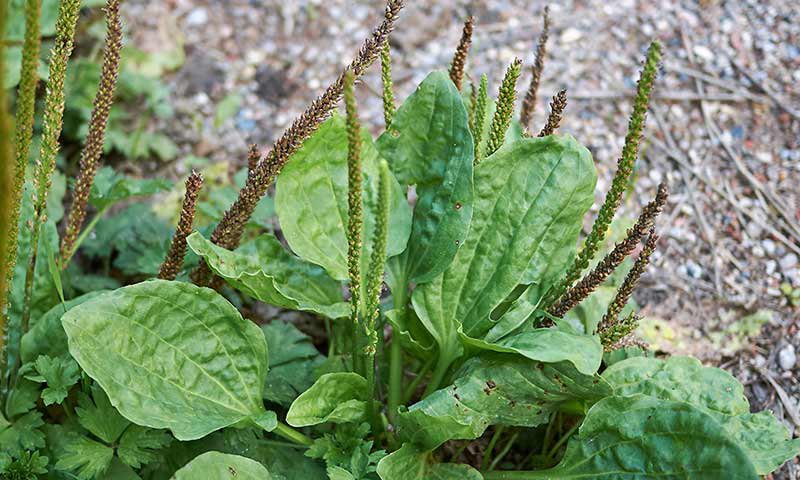Meet a local plant: Plantain
I love introducing people to broadleaf plantain (Plantango major) for the first time.
No, I don’t mean the large tropical banana-like fruit – though that’s also a favorite of mine (pass the tostones, please). I mean the humble, omnipresent green fellow that’s probably springing up in multiple spots in your yard as we speak.
Sometimes called plantain weed, plantain is also referred to as white man’s footprint because it arrived with colonists from Europe and spread quickly. So no, it’s not a native plant, but it’s long been recognized for its edible and medicinal properties by Indigenous folk, herbalists, foragers, and others.
According to folktales, a young woman waiting by the roadside for her lover transformed into the plant because she spent so much time pining for him. Since plantain can basically grown anywhere, and often shows up by roads or in other “waste spaces,” this story reflects the tenacity of the plant. But plantain is no wistful paramour. It’s hearty, resilient, and incredibly resourceful.
I’m not a medical doctor, and nothing I say should be taken as a medical recommedation without consulting a professional first. My favorite medicinal use for plantain is for bug bites and poison ivy. You could make a salve out of it, but I do something even easier. When I have a bite or sting, I run into the yard, pick a clean leaf, chew it up, and then stick it, spit and all, onto the bite. It really works for itching, especially. (Jewelweed is another one to try for this.) Other documented medicinal uses include: wound healing, inflammation reduction, a and block for microbial growth. Native Americans also used it for snake bites and headaches. It was also considered an aphrodisiac.
Another way to use plantain? Eat it. Tender young leaves taste like blue cheese, and the unimpressive greenish seeds and flowers, which grow on a tall stalk, contain tons of psyllium – used as a dietary fiber. They have a nice crunch, too. New to foraging wild plants? Read these essential tips before you try it.
I’d love to know about your relationship with this humble, wonderful plant. Reach out and tell me about it.
